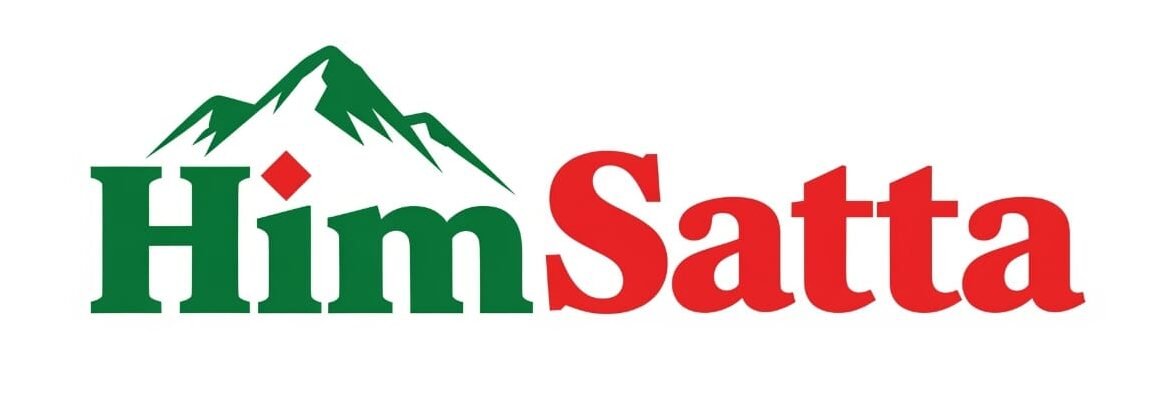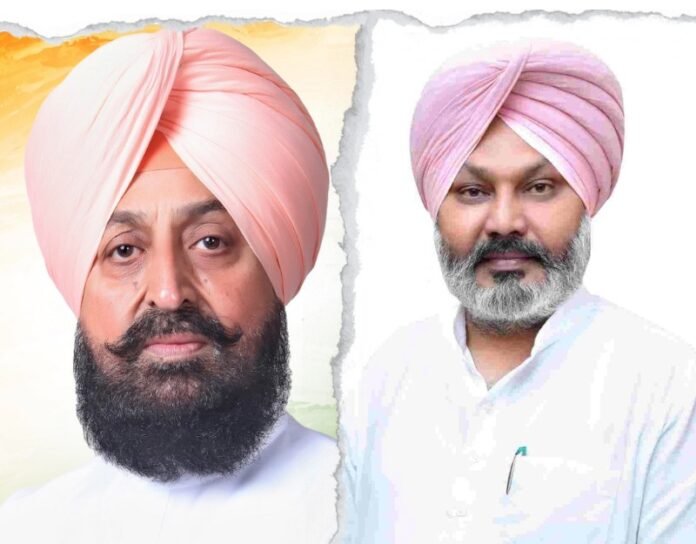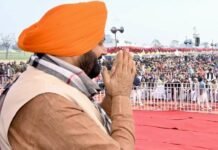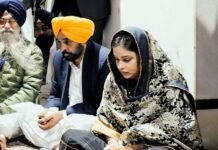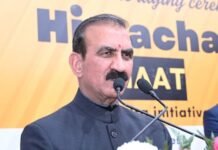A fresh political storm has gripped Punjab as Leader of the Opposition Partap Singh Bajwa has mounted a scathing critique of the Aam Aadmi Party (AAP)-led state government, accusing it of pushing Punjab dangerously close to financial collapse. The Congress veteran, known for his sharp rhetoric and strategic positioning, has claimed that the state’s ballooning debt is the direct result of “reckless borrowing” by the current regime—borrowing which he says is unsustainable, fiscally irresponsible, and politically motivated. At the heart of the storm lies the question of Punjab’s economic future and the ideological clash between fiscal expansion and austerity.
In a series of recent public statements and legislative interventions, Bajwa accused the Bhagwant Mann government of using loans to finance short-term populist schemes without creating long-term assets or revenue-generating infrastructure. His criticism has found echo among sections of the civil society and economic experts who worry that Punjab’s already fragile finances are being stretched further with little room for correction. Bajwa claims that if the current borrowing trend continues unchecked, Punjab’s next generation will inherit a treasury deep in red, shackled by interest payments and shrinking fiscal autonomy.
Finance Minister Harpal Singh Cheema, however, has come out strongly in defense of the government’s fiscal management, dismissing Bajwa’s remarks as politically motivated and devoid of economic understanding. According to Cheema, the debt being incurred is not a product of fiscal adventurism but a carefully measured response to legacy issues inherited from previous governments. He cited data to assert that much of the state’s current debt burden predates AAP’s rise to power, and that successive Congress and Akali-BJP governments had borrowed heavily without laying any groundwork for reform or recovery.
Cheema stressed that all borrowings have been made in line with the Reserve Bank of India’s guidelines, maintaining the fiscal deficit within permissible limits. He also pointed out that a significant portion of funds are being invested in welfare schemes, infrastructure improvement, education, and health—sectors that directly impact public well-being and long-term productivity. In his view, critics are choosing to ignore the fact that responsible borrowing can be a growth catalyst, provided it is accompanied by structural reform and tight fiscal discipline.
The debate has now snowballed into a broader discourse over the nature of public spending, debt sustainability, and political accountability. Bajwa’s attack coincides with the release of several financial reports showing that Punjab’s total outstanding debt is inching toward ₹3.5 lakh crore—a figure that includes both market borrowings and liabilities to the central government. Although the state has also posted impressive Goods and Services Tax (GST) growth this year, many experts believe that this uptick is not sufficient to offset the structural debt crisis without deeper reforms in tax administration and expenditure control.
Adding fuel to the fire, Bajwa also accused the Mann government of prioritizing optics over substance—alleging that mega events, advertising campaigns, and expansionist welfare announcements have taken precedence over fiscal prudence. He warned that a fiscal crisis in Punjab would not only affect development but could also jeopardize critical sectors like agriculture and public health, both of which require consistent state support.
The Finance Minister, in reply, countered these concerns with a detailed breakdown of resource allocations, asserting that the state has increased capital expenditure in key sectors, streamlined subsidy distribution, and plugged several leakages in procurement and public service delivery. He urged opposition parties to “rise above electoral opportunism” and support key financial bills that could boost investor confidence and improve Punjab’s credit profile.
Observers say that while the truth likely lies somewhere between Bajwa’s warnings and Cheema’s reassurances, the political stakes are undeniably high. With Punjab inching toward municipal and panchayat elections later this year, the economic narrative will play a pivotal role in voter perception. Both sides are working not only to shape public opinion but also to align their fiscal messaging with broader national debates on debt, inflation, and economic resilience.
What remains clear is that Punjab stands at a financial crossroads. The choices made today—whether to curtail borrowing or invest for growth—will define its future trajectory. As the political war of words intensifies, the people of Punjab await actions, not just accusations, to restore confidence in the state’s economic stewardship.
#PunjabPolitics #PartapSinghBajwa #HarpalSinghCheema #PunjabDebtCrisis #AAPGovernment
This is an auto web-generated news web story.
